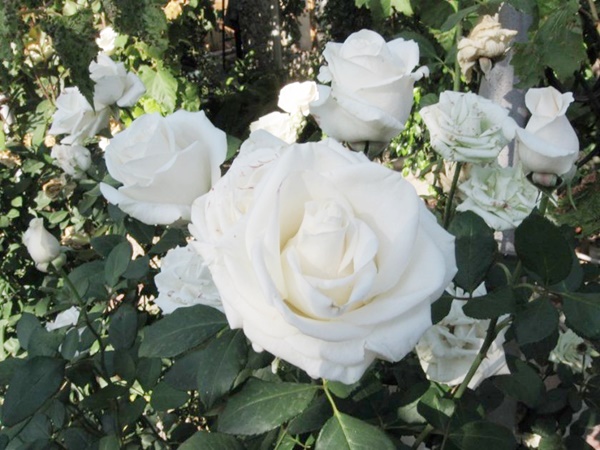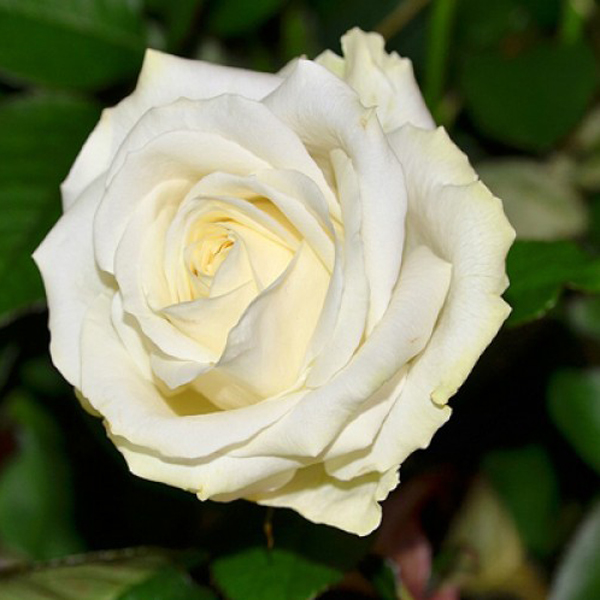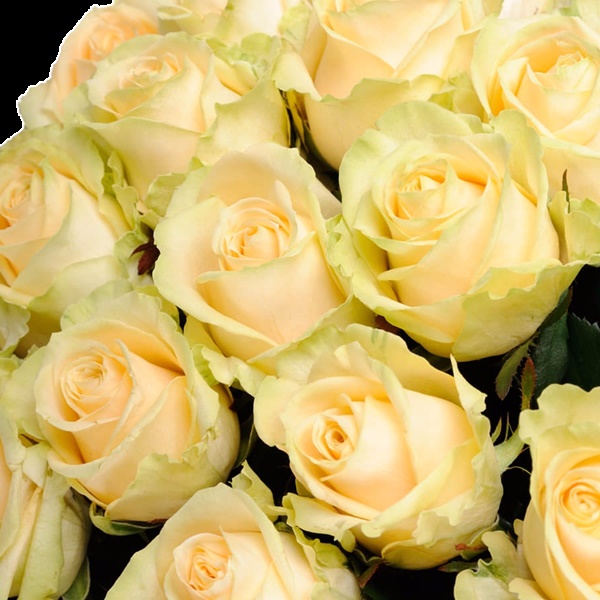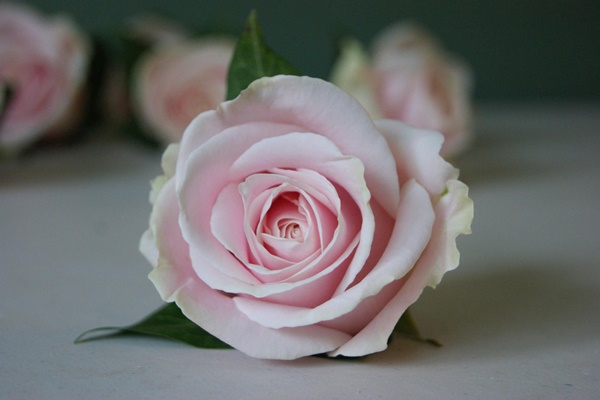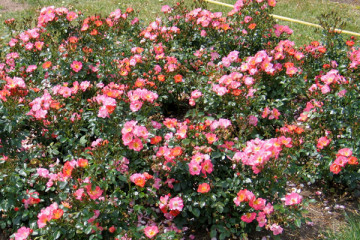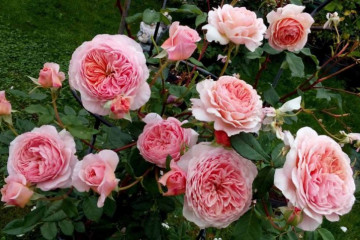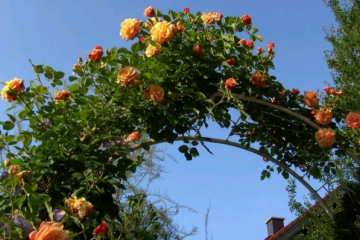Rose Avalanche
Content:
White roses have always been very popular. The Avalange variety is another surprise for flower growers. After all, this is a representative of the hybrid tea group with remontant properties. Rose Avalange is highly demanded due to its beautiful appearance and characteristics. She is good for bouquets, in a flower bed, is a welcome inhabitant of gardens.
History
Translation of the word Avalanche means "avalanche". The bush blooms profusely, resembling the snow that came down from the mountains, the process itself continues for quite a long time. Rose Avalanche (market name) bred by a breeder from the Netherlands in 2004. The author Lex Wurn was familiar with all the intricacies of these colors, since he was 15 years old. The flower has the code name Lexani, which is consonant with its name.
Short description
The bush is not too high - 0.8 m, it looks neat in the flower bed. Not very sprawling, 0.5 m wide, growing vertically. Growth rates may vary depending on growing conditions (up to 1.2 m).
Description also includes the following features:
- Strong, straight-growing shoots that do not linger during flowering.
- Few thorns.
- There is one bud on each stem, two are formed very rarely.
- Large dark green leaves complement the beauty of the flower. Matt and smooth surface of the plates.
- Dense cone-shaped buds with a slightly pointed tip. During blooming, the extreme petals are bent down.
- Classic flower shape, high center. When fully expanded, a yellow center appears in the form of a bowl.
- Weak aroma.
Avalange or white rose of the considered variety has flowers with a diameter of up to 10 cm, from 17 to 25 petals. At the initial stage of dissolution, there is a pistachio outflow. Under the rays of the sun at sunset, the color seems to be vanilla in shade. Many growers enthusiastically speak of this variety; Rosa Avalanche seems to them to be the standard.
Avalanche rose gives its first wave of flowering in the first half of June. Including the break, the repeated period lasts until the cold season. With the onset of winter, the plant goes to the stage of complete dormancy until spring, swelling of the buds.
The cultivar is re-blooming. That is, the Avalange hybrid tea rose belongs to the remontant type. In a grafted specimen of two years of age, the process is observed the next year after placement in the garden. The plant takes a break between the primary and secondary harvest of flowers. At this time, there are buds, but in small numbers.
Advantages and disadvantages of the variety
The list of good qualities of a rose is as follows:
- Excellent appearance.
- Good winter hardiness, wintering at -23 ° C.
- Re-flowering.
- Medium resistance to black spot and powdery mildew.
- There is a rose's resistance to rainy weather.
- Good heat tolerance.
- High regenerative capacity, both during transplantation and after winter.
- During the flowering period, the color does not change.
Use in landscape design
The variety is very popular with both florists and territory designers. The plant looks good in flower bed arrangements. Apply group and single landing. A hedge of roses greatly decorates the site. In the landscape, Avalange combines well with other colors, looks spectacular on a flat lawn.
Varieties of varieties
Other representatives of the variety are also suitable for cutting, they are members of the hybrid tea group. So Peach Avalanche + (Peach Avalanche) and Sweet Avalanche + (Sweet Avalanche) also belong to the Lex Voorn selection. They have a slightly different color. The first of these was published in 2007 with the code Lexhcaep (a peach avalanche of a light apricot shade with a semi-double shape, quite winter-hardy).
The rose of the Pink Avalange variety is pink in color, as the name suggests. Avalanche Pearl is translated as pearl, has the appropriate shades. Its color scheme is very sophisticated: these are creamy, pink shades with a pearl shine.
Sweet Avalange
Sweet Avalanche appeared first in the selection of varieties. Author Lex Wurn presented it in 2006. Rose Sweet Avalange has the Lexteews code. She has a delicate pink hue. Semi-double flowers, up to 25 petals in each, have a classic shape. Significant winter hardiness (-20 degrees), resistance to diseases, pests. Purpose - decoration of flower beds and a site near the house. The height of the bush is up to 1.2 m, the diameter of the flower is up to 12 cm.
Candy Avalange
The variety is prized by florists. The Candy bush is compact, up to 0.8 m. It blooms from early summer to frost in autumn. The bud opens up gradually, keeping its shape well. Coloring combines pink and milky shades. A flower with a diameter of 10 cm, a rose stands in a vase for a long time, up to 12 days, has a pleasant fruity smell.
How to plant in the ground
All beautiful roses, including the Avalange variety, are demanding to care for. For example, powdery mildew may well infect a plant if it is absent. The gardener needs to be prepared for this, to take preventive measures. If desired, even a beginner can cope with the cultivation. Due to the small number of thorns, maintenance is quite simple. A dry, warm climate will be preferred. So the plant will avoid diseases associated with damp weather.
In what form is the landing
Use ready-made seedlings. Hybrid tea roses are not very willing to propagate by seeds and cuttings. Still, these methods are used.
What time to plant
It is customary to place seedlings on the site in the spring. The bush will have time to take root in the place chosen for it, and also safely move to a dormant period. You need to make sure that the frost is over. The procedure can be carried out in the fall, from late October to early October. The bush should take root before frost.
Location selection
The site is chosen to be lit to the maximum, because the variety loves the sun. Requires a fence against drafts, wind. Florists note that this rose feels good in greenhouses, where it is grown for bouquets.
How to prepare the soil and flower for planting
The soil should be with an acidity of 5.6 to 7.3. To increase the indicator, manure or peat is added. To reduce it, you need to add ash or lime. Clay soil requires the addition of sand, humus and peat. Good permeability and drainage are necessary so that the liquid does not stagnate in the root system, otherwise the plant may die. They also pay attention to how the groundwater is deposited. If not lower than 1 m, the rose is threatened by black spot.
Planting procedure step by step
The placement of a rose on the site occurs in the following stages:
- They dig a hole 50 cm deep.
- At the bottom there is a 10 cm drainage: stone, crushed stone.
- Organic fertilizers and garden soil are introduced.
Plant care
The bush needs regular soil moistening, loosening, weeding. You also need to fertilize and protect from pests. Pruning, mulching are required.
Watering rules and humidity
The soil under the bush should be sufficiently moistened. Before watering, the soil must dry out to prevent moisture stagnation. Abundance and regularity when watering are important. Drying of the soil should not be allowed, especially in hot weather. Each bush requires 20 liters of water. The weather is taken into account, the minimum frequency is 2 times a week. Watering roses is stopped in the fall.
Top dressing and soil quality
The soil should be loose, permeable to water and air, as well as nutritious, for which it is fertilized. The plant responds very well to feeding. The combination of organic and mineral fertilizers improves flowering. In the spring, the bush is given nitrogen, in the summer - potassium and phosphorus. Biohumus and humus are used as organic matter at any time.
Pruning and replanting
Rose bushes are not easy to prune. But the plant must receive an incentive for intensive development. In this case, the form becomes decorative. By removing dead and old stems, the grower directs nutrients to the young branches. Due to oxygen saturation, immunity improves.
If it is necessary to transplant, the plant quickly adapts to another place, thanks to its regenerative ability. Therefore, you can transfer a flower if the previous arrangement was accompanied by diseases, poor development.
Wintering features
At the winter temperature specified in the description of -23 degrees of frost, the plant can not be covered for the winter. If the region has a harsher climate, action must be taken. Cold season tolerance is observed with sufficient snow cover.
During and after flowering
To improve flowering in the summer, potash and phosphorus fertilizers are applied. Water the plant regularly (2 times a week or more). Make sure that the soil does not dry out, and also does not become excessively wet.
Possible causes, if not blooming
Flowering is noted to last longer in warm weather. It can become abundant from the introduction of organic matter and mineral fertilizers. Correct pruning improves performance.
Flower propagation
Cuttings are used, obtained from young, but strong shoots. The seeds of hybrid tea roses hardly germinate under normal conditions.
Cuttings are selected for propagation at the end of the first wave of flowering, as well as when pruning. In this case, the stems must be strong. It should be planted immediately in soil or container, but the survival rate will be worse.
Diseases, pests, methods of control
Sufficient resistance to diseases is manifested subject to the rules of agricultural technology and a well-chosen place of growth. Powdery mildew requires prophylaxis so that there are fewer care worries. Dangerous pests are bronzes. These are bugs that spoil the appearance of the plant. Spider mites, green aphids, leafworms, and bear cubs also pose problems. They use drugs - insecticides.
Heavy rains can badly affect the culture. The flowers turn black or pink spots appear on them. The same happens with rosebuds without opening them. The problem is exacerbated at cold temperatures.
